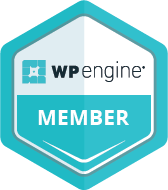Most content starts with an introduction. Great content begins with the outcome.
That’s the difference context framing makes. Instead of easing into your message, it puts the end result front and center, right at the top, so your audience knows why they should care.
If you’ve ever wondered why time-on-page is low or bounce rates are high, it might be because your content buries the value. Context framing solves that by giving the reader a reason to stick around.
Let’s break down how this works, why it builds trust, and how it aligns with Google’s best practices for content clarity and user-first design.
What Is Context Framing?
Context framing is the technique of showing your audience the finish line before you take the first step. It sets the tone, stakes, and purpose of your message right up front.
It’s the digital equivalent of saying, “Here’s where we’re headed, and here’s why it matters to you.”
This works especially well for:
- Blog posts
- Landing pages
- Lead magnets
- Email sequences
- Video intros
When people see the value of the content before committing their time, they’re more likely to stay engaged.
Why It Matters
We live in a scroll-first culture. You get about 3 to 5 seconds to show your audience that your content is worth their time.
According to Google Web Fundamentals, speed and relevance drive engagement. That doesn’t just mean fast load times. It means getting to the point quickly and helping users understand why they should keep going.
Context framing does just that. It removes ambiguity and orients the reader immediately.
Think of it like GPS. When people know the destination, every turn along the way makes more sense.
Examples of Context Framing in Action
Blog Post:
Weak start: “There are many ways to improve your content strategy…” Stronger start: “In this post, I’m going to show you the exact 3-step framework I use to increase organic traffic by 40% in 90 days.”
Landing Page:
Weak headline: “Welcome to Our Services Page” Stronger headline: “Scale Your Marketing with a Partner Who’s Helped 50+ Companies Increase Conversions by 2x”
Video:
Weak open: “Hi, my name is…” Stronger open: “In the next 60 seconds, I’m going to show you how to cut your ad spend in half without sacrificing results.”
How to Use Context Framing in Your Content
1. Lead with the outcome
Let the reader know the result or transformation right away. Focus on what they gain, not what you offer.
2. Build a quick roadmap
Tell them what to expect. Outline the key points you’ll cover so they can follow along more easily.
3. Reinforce along the way
As they move through the content, keep reminding them how each section connects to that promised result.
4. Use visual framing
Use bold text, spacing, or block layouts (like in GenerateBlocks Pro) to make the end goal stand out.
5. Repeat the payoff in your CTA
Bring it full circle. If you opened it with the value, end it with it too.
SEO Benefits of Framing Content with the Outcome First
Context framing doesn’t just help with engagement, it supports stronger SEO and conversion outcomes.
- Improved dwell time because users stay longer to reach the promised insight
- Lower bounce rates when the purpose is clearly stated
- More accurate content classification by search engines crawling your page
Google’s Search Quality Evaluator Guidelines highlight “purpose of the page” as a key metric for evaluating helpful content. Starting with the end helps clearly define that purpose.
When the first few lines of your content align with the user’s intent, you send a strong signal to both the reader and the algorithm that your content is worth reading.

Wrapping It Up
The next time you write, don’t start with “why this matters.”
Start with what’s possible. Start with what they can gain.
Context framing is the bridge between attention and action. It respects your reader’s time, builds momentum, and sets a clear expectation that makes it easier for them to stay engaged and take that next step.
If your content isn’t converting, check how it starts. You might just be burying the value.
Need help creating landing pages and blog content that gets to the point and gets results?
Let’s work together.
Schedule a consultation or connect on LinkedIn to start mapping out a content structure that performs.

